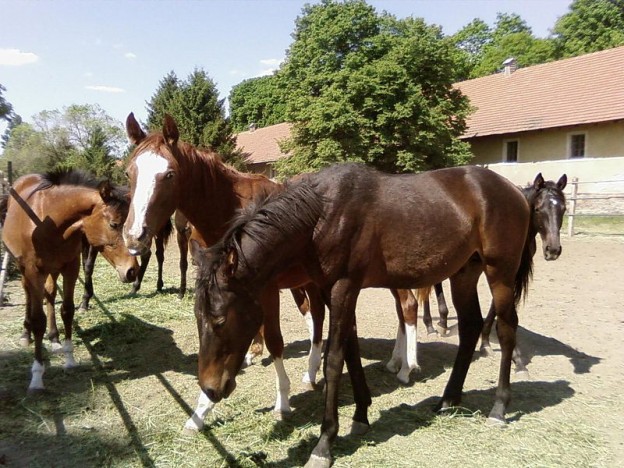Utah agriculture officials are advising horse owners not to accept shipments of equine, nor send their equine, to Dona Ana County, New Mexico. A race track near Las Cruces, New Mexico has three barns quarantined following the finding of one horse with a clinical neurologic disease.

Public domain image/Dusan Bicanski
Sampling to confirm Equine Herpes Virus is underway on the deceased horse. There are two more horses that are showing mild clinical signs of EHV at the quarantine facility. The facilities and animals on premise have all been quarantined and careful monitoring of all other animals is currently underway. New Mexico state authorities are in route to assess the facility biosecurity/quarantine, animal welfare, diagnostic procedures, and animal monitor.
According to Veterinary Virology, Equine herpesvirus 1 (EHV-1) is a virus of the family Herpesviridae that causes abortion, respiratory disease and occasionally neonatal mortality in horses.
Initial spread of EHV-1 by a newly introduced horse through direct and indirect contact can lead to abortion and perinatal infection in up to 70 percent of a previously unexposed herd. Abortion usually occurs in the last four months of gestation, two to four weeks after infection of the mare. Perinatal (around the time of birth) infection can lead to pneumonia and death. Encephalitis can occur in affected animals, leading to ataxia, paralysis, and death.
See more about EHV-1 in the Merck Veterinary Manual.
Although humans can’t be infected by EHV-1, they can aid in spreading it to their horses. Therefore, owners of affected horses should wash and disinfect their hands and change their clothes before coming into contact with healthy horses to prevent the potential spread of these infectious organisms.
Related:
- Bird flu confirmed in Indiana turkey flock
- ‘Mild’ H5N1 strain id’d on Fife farm
- Elephant TB transmission to humans at Oregon Zoo

